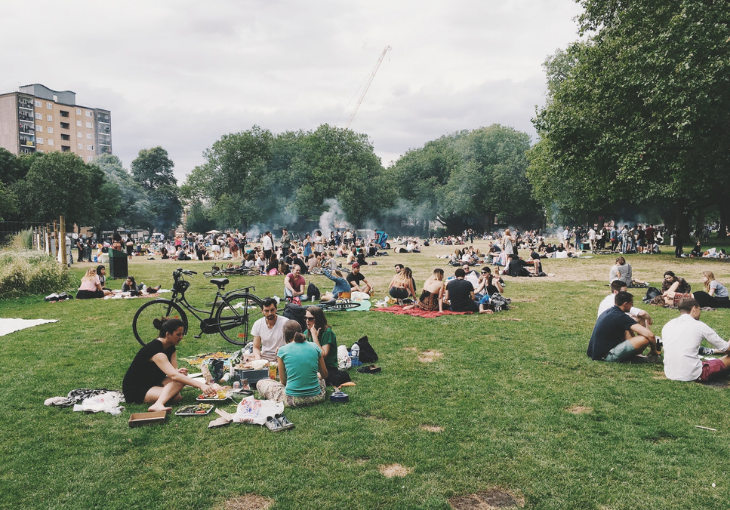Let's analyze the components of a real estate development product that will help the dwellers of your housing estate communicate more, make friends with neighbors, and grow social capital.
It is the social interaction that makes us happy. People feel most satisfied with life after 6–7 hours of communication. As Italian scientists found out in 2008, even money is not capable of destabilizing the internal balance of a person as much as a decrease in the number of contacts and friends. But how many developers do take this into account when creating an environment where people spend every day of their life?
In this article, I would like to offer the solutions for real estate development products that will help strengthen the socializing since it is this, according to Charles Montgomery, urbanist and author of the book Happy City, that is the greatest achievement of cities. Using them, each housing estate can and should become more "communicative", predisposing to new connections and meetings of residents. This can be achieved by focused effort on the product.
LOCATION: more accessibility
All developed cities follow the same trajectory: they expand their outskirts. But the longer our journey time is, the less likely we will be involved in social life: communication, participation in common events, pastime with friends or even with family. This is why it is so important to ensure humane distances to key infrastructure facilities and to be actively involved in improving transport accessibility.
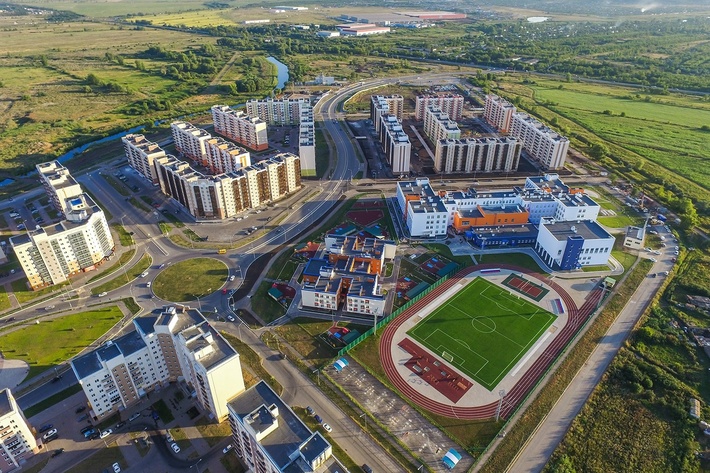 Yuzhny Gorod (meaning South City) Residential Neighborhood, Samara. The developer has designed 9 public transport stops. Its dwellers are the first to test environmentally friendly transport – electric buses. It is also planned to build a sky metro line.
Yuzhny Gorod (meaning South City) Residential Neighborhood, Samara. The developer has designed 9 public transport stops. Its dwellers are the first to test environmentally friendly transport – electric buses. It is also planned to build a sky metro line.
HEIGHT: the lower the more
Economically speaking, high-rise construction is certainly more attractive, but each next floor separates people from the opportunity to interact with each other. Starting from the fourth floor and higher, it is more difficult to observe children and neighbors, to be engaged in the life of the courtyard. In low-rise buildings, on the contrary, satisfaction from communicating with neighbors is usually higher: there are fewer contacts, but they are of higher quality. The limited number of apartments on a floor forms a more private, ergonomic atmosphere, which is favorable for the psychological health of people.
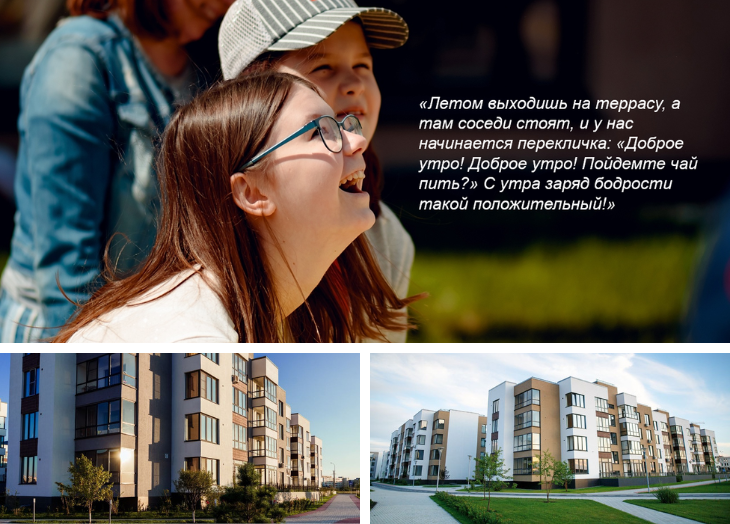 Feedback from dwellers of Ozhogino low-rise housing estate, Tyumen
Feedback from dwellers of Ozhogino low-rise housing estate, Tyumen
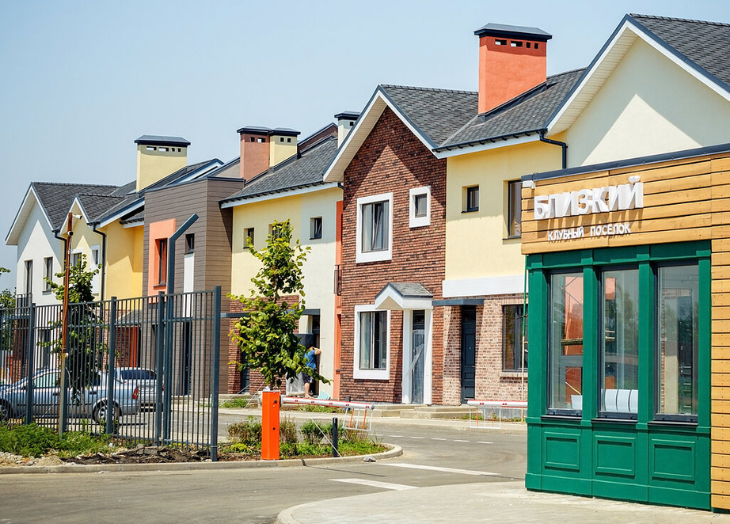 Blizky Club Village, Leningrad Region
Blizky Club Village, Leningrad Region
Why isn't it so profitable to build high-rise housing? Read an article written by a designer with 22 years of experience explaining it in our blog.
RETAIL: life is everywhere
The magic of small coffee shops, bakeries, and street stalls is undeniable. It is extremely important not only to provide for multi-format retail but also to make it friendly. If the ground floors look welcoming, pedestrians are surrounded by human activity. "The light from the windows of shops, offices, and apartments in the evening enhances the sense of security on the streets," writes Jan Gehl, famous Danish urbanist and author of the book Cities for People. "The smoothed boundaries (between the street and the building) make it clear that the city is hospitable to people." Completely closed during off-hours retail spaces, on the contrary, generate a sense of danger and alienation.
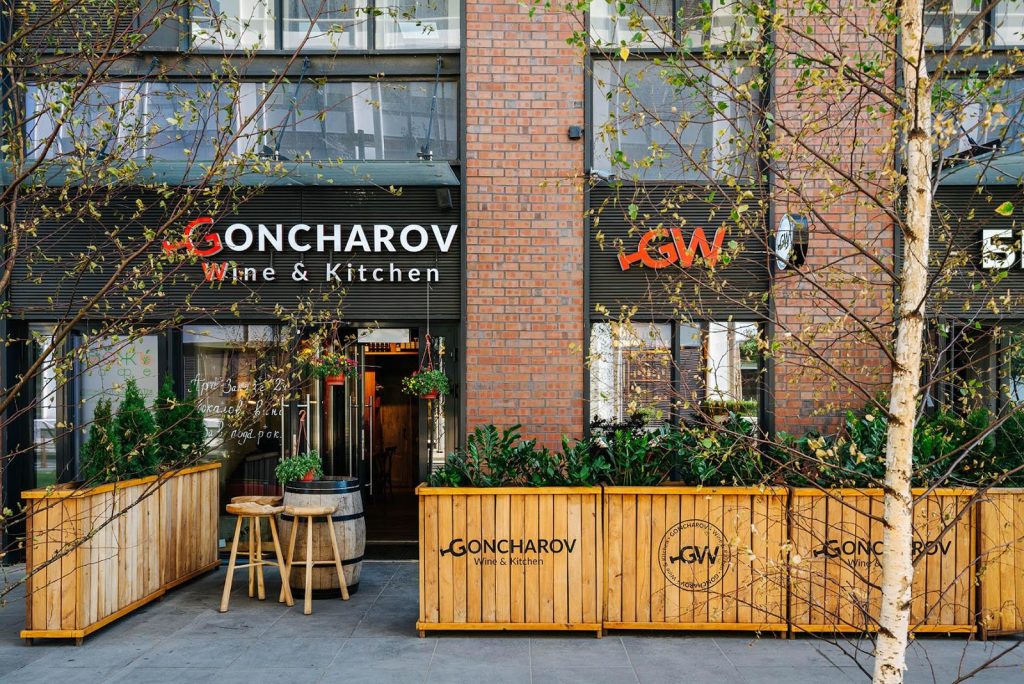 Street retail in Savelovsky City, Moscow
Street retail in Savelovsky City, Moscow
CENTERS OF ATTRACTION: a magnet for communities
Each place needs its own "magnet", be it a central square, an inner park or a promenade with a set of various functions: walking, sports, recreation. People with a similar lifestyle – dog lovers, cyclists or parents of babies – get together to chat with like-minded neighbors and strengthen their togetherness. The very fact of availability of such a place nearby encourages people to stay on the street more and make new acquaintances.
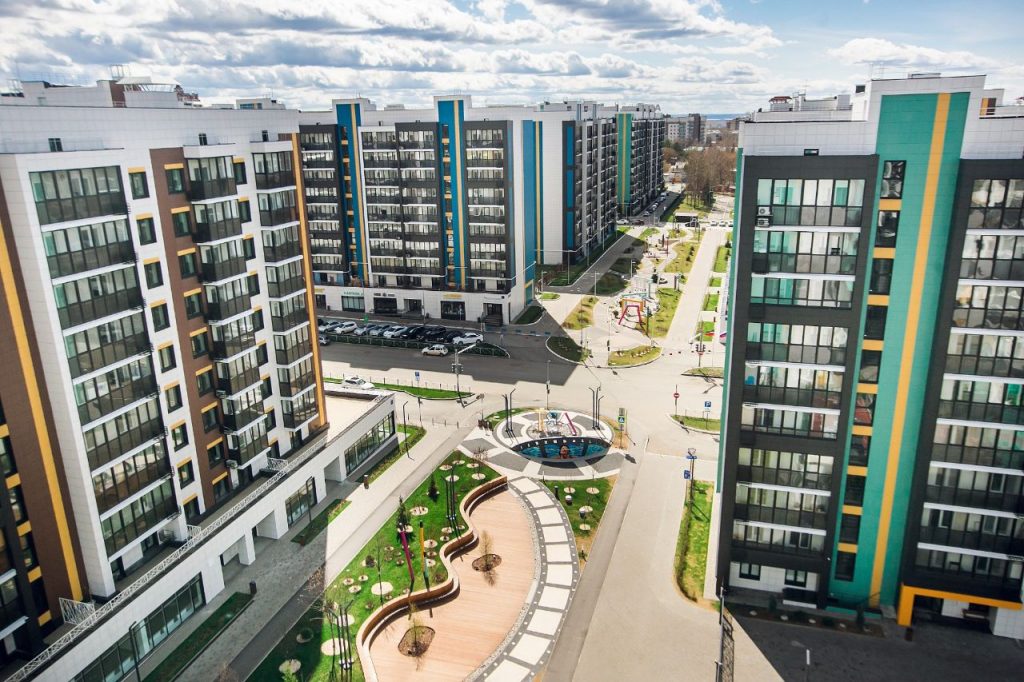 Pedestrian promenade in ART City Residential Neighborhood, Kazan
Pedestrian promenade in ART City Residential Neighborhood, Kazan
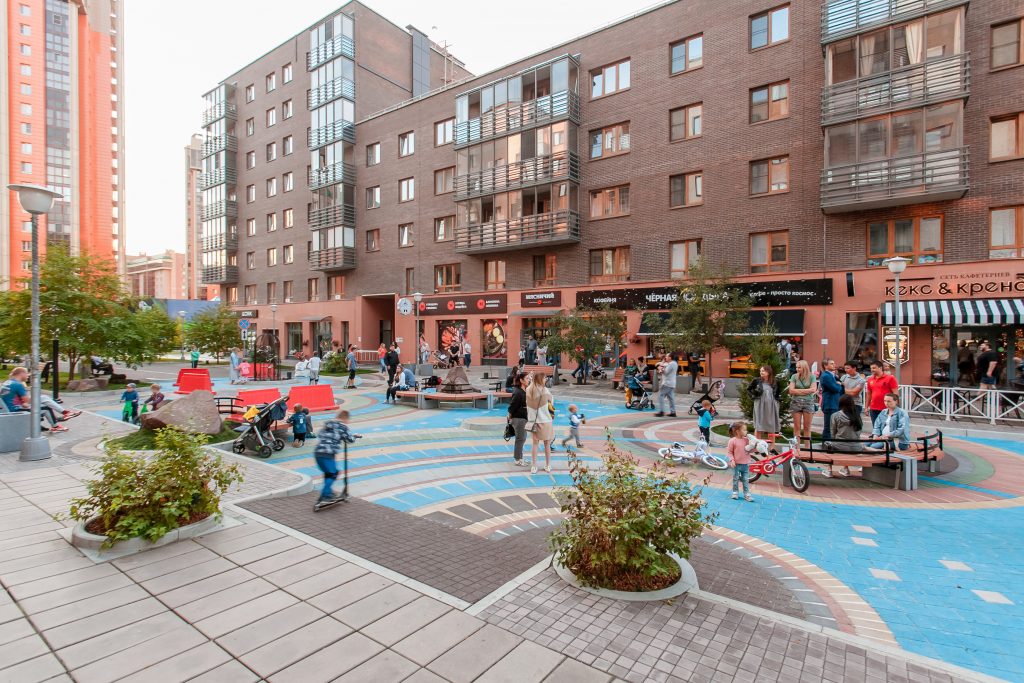 Pedestrian boulevard in Yuzhny Bereg (meaning South Riverside) Residential Neighborhood, Krasnoyarsk
Pedestrian boulevard in Yuzhny Bereg (meaning South Riverside) Residential Neighborhood, Krasnoyarsk
COURTYARD: cozy chaos
One of the obvious solutions is to make the courtyard interesting, to provide for both standard and unusual areas where people will interact with each other. It won't hurt to employ some fantasy: yoga grounds, amphitheaters, gazebos or barbecue areas. Or what about a mini-planetarium?! The fundamentally important principles are:
— clear and straight geometry deprives the courtyard of "small chaotic pleasures", while some disorder makes it cozy and intuitively close to people;
— in "green" courtyards, regardless of the time of day, life is always in full swing, while concrete ones seem deserted. You can also actively involve the dwellers in gardening since getting hands dirty with soil increases the serotonin level and perfectly helps to unite all those involved.
Tactical urbanism as a new trend in real estate development. Why and how to give dwellers the right to vote. Read the article by a strategist of GMK.
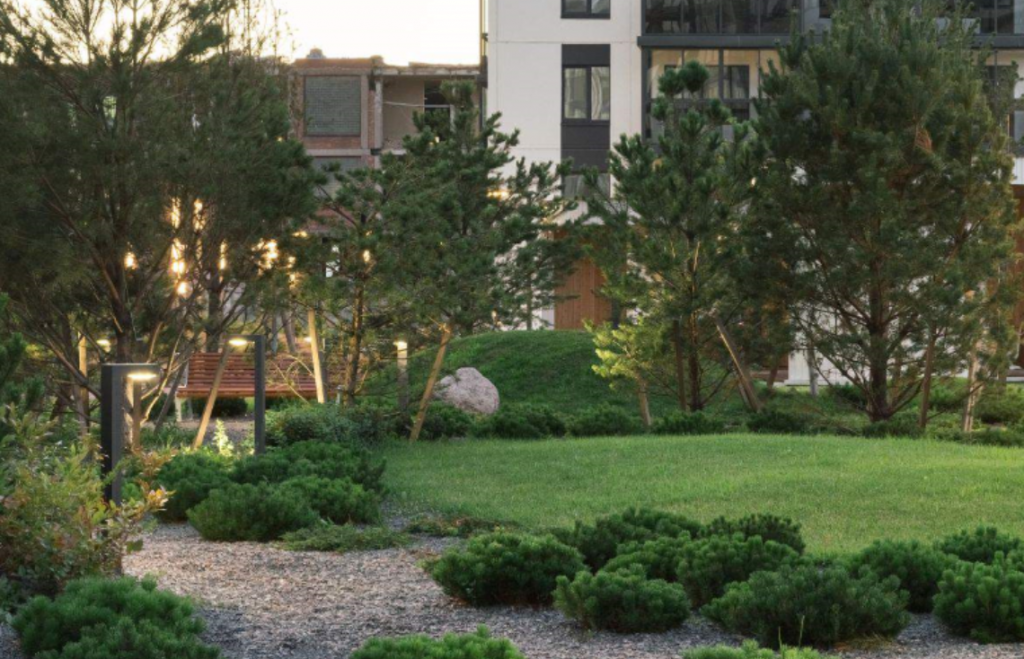 Courtyards of Magnifika Lifestyle, St. Petersburg
Courtyards of Magnifika Lifestyle, St. Petersburg
PLAYGROUNDS: the game never ends
If children do not play enough with their peers in the first five years of their life, there is a high probability that a mental illness will develop. Contemporary manufacturers of playground equipment are fully aware of their responsibility, therefore they combine as many interesting zones as possible for children to interact with each other. An example is Buninskiye Luga (meaning Bunin's Meadows) Residential Neighborhood, where the architects embodied the concept of an endless game.
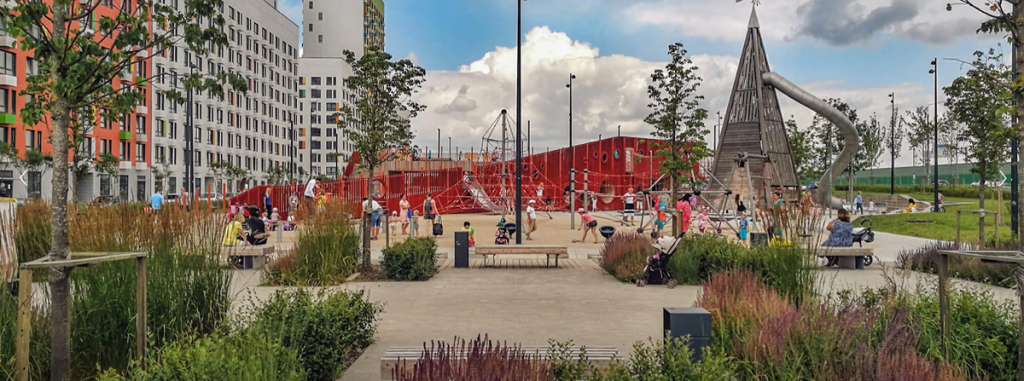 The playground of Buninskiye Luga Residential Neighborhood, Moscow
The playground of Buninskiye Luga Residential Neighborhood, Moscow
NEIGHBORS' SPACE: it's more fun together
We already know for sure that this is not just a marketing ploy. People with a sense of belonging to their community are happier than those without it. If the functioning of neighbors' space is fine-tuned, it hosts regular events, and the neighbors themselves spontaneously gather and offer activities, then it means that it really forms a happy community.
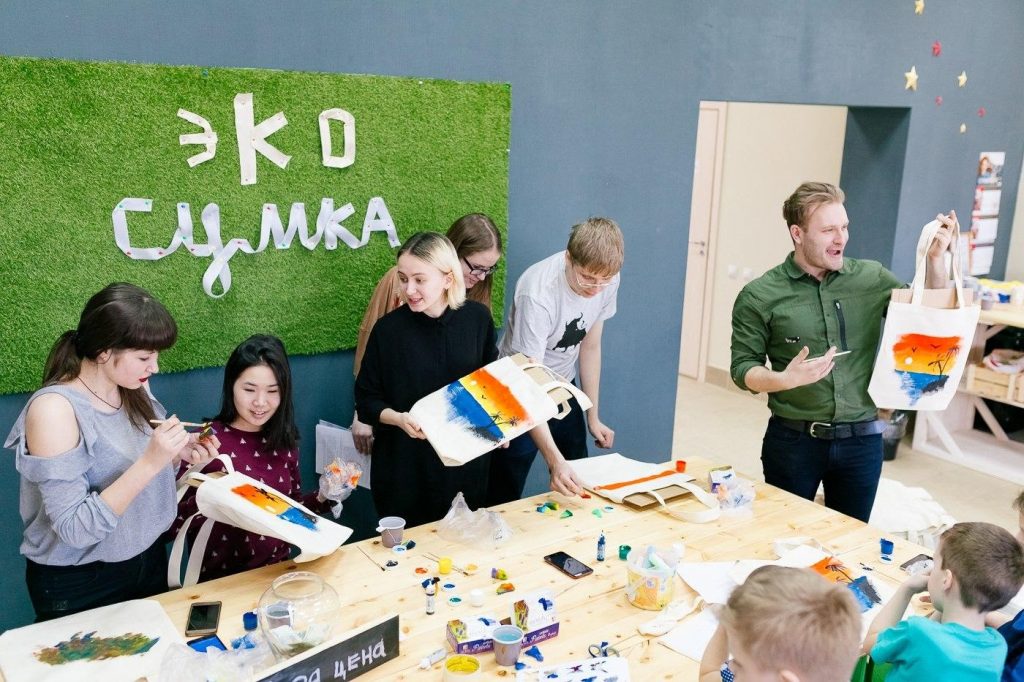 Neighbors' center of Obraztsovo Neighborhood, Krasnoyarsk
Neighbors' center of Obraztsovo Neighborhood, Krasnoyarsk
ENTRANCE: a warm welcome
In my opinion, the potential of this space is underestimated. It's the area of first meeting with neighbors where you can exchange a smile and wish each other a great day. Here are some ideas for creating a real community in your lobby: soft sofas, kids play area, wall bar, an area for watching movies, fitness equipment, or even an aquarium. For example, SKON developer in its Surikov project designed a self-service espresso bar to gather dwellers in the lobby in the morning. These are perfect solutions to unite neighbors in bad weather and help them get to know each other better.
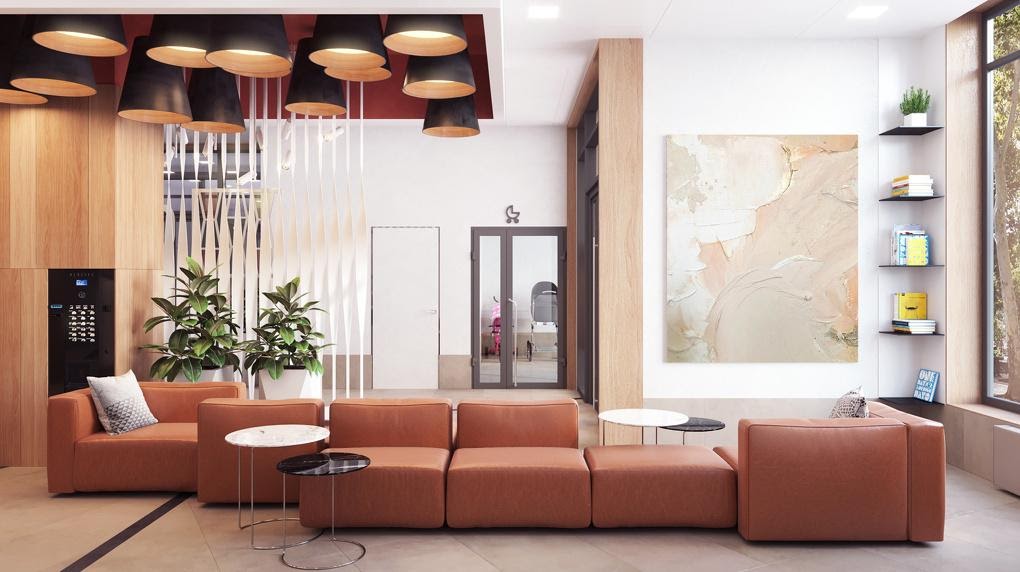 Surikov Community Project, Yekaterinburg
Surikov Community Project, Yekaterinburg
"If you want to be happy, create a city where time is not wasted on the road but used for communication with family and creativity. Where public spaces encourage new acquaintances. Where, regardless of the income level, residents feel their importance, involvement, connection with the city, and take responsibility for their own future."
Charles Montgomery, urbanist and journalist
Recommended books about happy cities
- Happy City: Transforming Our Lives Through Urban Design, Charles Montgomery, 2019
- Habitat. How architecture affects our behavior and well-being, Colin Ellard, 2020
I hope the article has been of use to you. Do you know other examples of successful experience in creating projects with happy communities? Send them to kondr@gmk.ru, we will add them to the selection!


